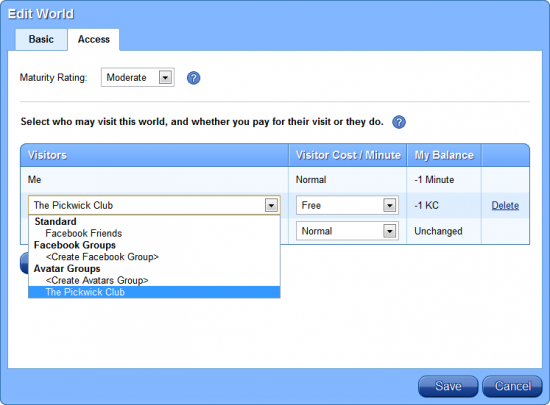Kitely, the OpenSim grid offering on-demand and easy region setup, has added support for groups and profiles, the company announced today.
With groups, Kitely users can specify who can enter individual regions, and who can build on them. Groups can also be used to send out instant messages to all the members at once. Kitely now supports the standard Second Life-style groups functionality.
Previously, the only way to specify access was through Twitter or Facebook lists. That meant that people who signed into Kitely using an email-and-password login instead of their Twitter or Facebook accounts had only two choices — keep the region closed to everyone but themselves, or open it up to the public.
Now, Kitely users have a new option on the Kitely website, in their access control panel, which allows them to pick from all their groups — their Facebook groups or Twitter lists if they have them, and from the groups that they’re members of in-world. For each group selected, the region owner can choose whether members can access the region for free, with the region owner picking up the cost, or whether the visitors cover their own costs.

Kitely usage costs around 20 cents per hour, billed in one-minute increments, with the first two hours of use a month free.
Kitely also added support for user profiles, offline instant messages, and improved default security settings and region exports in the form of OAR files.
Kitely is the third-largest OpenSim grid by land area, and the seventh most popular by active monthly user counts, as of our April grid report.
It is the only grid that charges by use instead of by land area. This makes Kitely a fantastic bargain for users who need a lot of land, for groups that meet infrequently, and for situations where the visitors can pick up their own usage costs. For example, running a freebie store or a popular club will cost the owners very little if the visitors pay their own way.
All users get one free region and two hours of in-world time to start with, and can purchase additional regions and minutes a-la-carte — 10 cents a month per region, and 20 cents per hour for usage — or through one of several tiered pricing plans.
- OSgrid back online after extended maintenance - April 16, 2025
- Analysts predict drop in headset sales this year - March 25, 2025
- OSgrid enters immediate long-term maintenance - March 5, 2025
